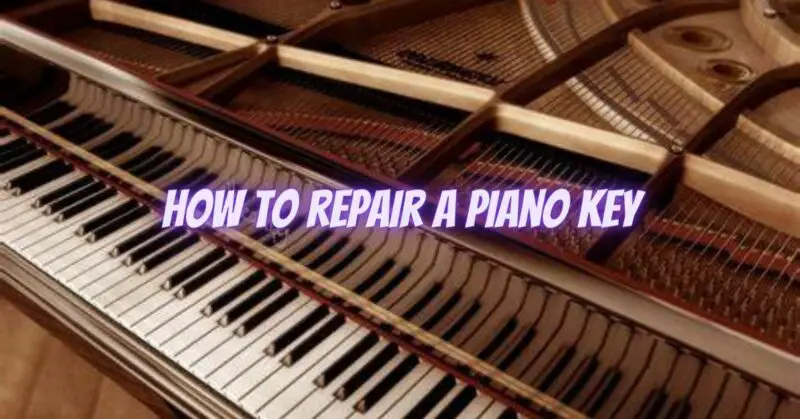A damaged or malfunctioning piano key can disrupt your playing experience. Whether a key is sticking, broken, or producing no sound, it is possible to repair many key issues with some basic knowledge and careful adjustments. In this article, we will guide you through the steps to repair a piano key and restore its functionality.
Step 1: Assess the Key Issue: Identify the specific problem with the piano key. Determine if it is sticking, uneven, broken, producing no sound, or experiencing another issue that requires repair.
Step 2: Cleaning and Lubrication: Start by cleaning the key and its surrounding area to remove any debris or dirt that may be causing the issue. Use a soft cloth or brush to gently clean the keytop, front rail, and balance rail. If necessary, apply a small amount of graphite powder or a specialized piano key lubricant to the key’s pivot points to reduce friction and improve key movement.
Step 3: Sticking Key: If the key is sticking, there may be an obstruction or misalignment in the action mechanism. Carefully remove the key slip (the thin strip of wood or plastic at the front of the keys) and examine the action mechanism underneath. Look for any debris, foreign objects, or misaligned parts that may be causing the sticking. Clean the area and make necessary adjustments to realign or fix any issues.
Step 4: Broken Key: If a key is broken or damaged, it may require more advanced repairs. Assess the extent of the damage and determine if it can be fixed with adhesive or if a replacement key is necessary. In cases of significant damage, it is advisable to seek assistance from a qualified piano technician or a piano restoration specialist.
Step 5: No Sound Production: If a key is not producing sound when pressed, there may be several possible causes. Check if the corresponding hammer is properly aligned and hitting the string. Inspect the string for any damage, breaks, or disconnections. Adjust or replace the hammer or string as needed. It is recommended to seek professional assistance for complex repairs involving the piano’s internal components.
Step 6: Reassembling and Testing: After making the necessary repairs and adjustments, carefully reassemble the key slip and ensure all components are securely in place. Test the repaired key by playing it and verifying that it functions properly, produces sound, and returns to its original position without sticking.
Step 7: Professional Assistance: For complex repairs, extensive damage, or if you are unsure about performing the repairs yourself, it is recommended to consult a qualified piano technician. They have the expertise and specialized tools to handle intricate piano key repairs and ensure optimal functionality.
Conclusion: Repairing a piano key involves a systematic approach, starting with cleaning, lubrication, and basic adjustments. For more complex issues, such as broken keys or internal problems, professional assistance is often necessary. Regular maintenance and prompt attention to key issues can help prolong the lifespan of your piano and ensure its optimal playability. By following the steps outlined in this article and seeking professional help when needed, you can restore the functionality of a damaged piano key and continue enjoying your instrument for years to come.


